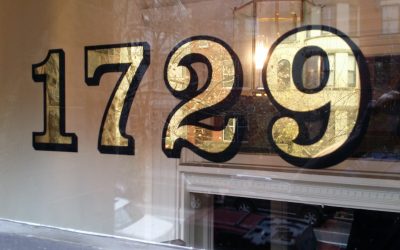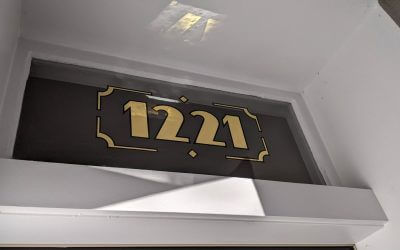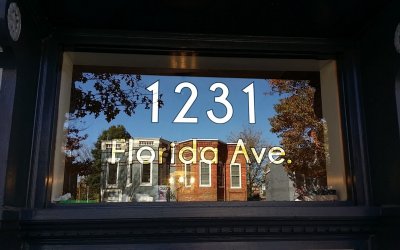A gold leaf home address looks great!
We completed this gold leaf home address at 1231 Florida Ave. in Washington, DC. Luckily the glass transom above this entry door is quite large compared to others in the region. The ample height of the transom provided enough space for the street name below the house numbers for an exquisite appearance. Surrounding colors of the door and trim also help the gold stand out.
Summarizing the gilding process
The process of gilding glass is relatively straightforward but also unforgiving of most mistakes. First, the transom glass must be completely free of debris (oil, dust, dirt, etc.). If any contaminants remain on the glass, they will remain indefinitely and potentially be visible upon completion. Painting the outline helps provide contrast between the gold and glass, increasing visibility.
Gilders must be patient!
Next, we delicately apply the gold leaf. Any incorrect moves by the gilder (even the wind) will cause the gold leaf to break or become deformed, making the gilding process more difficult than it should be. After fixing the holidays (imperfections), we allow the gold to dry. Then, we can put a protective coat of paint on the back of the gold leaf. This step helps seal the gold between the glass and prohibits the gold from being wiped away during cleaning the glass’s inside. Finally, we can safely remove the excess gold from around the address to achieve a finished appearance.
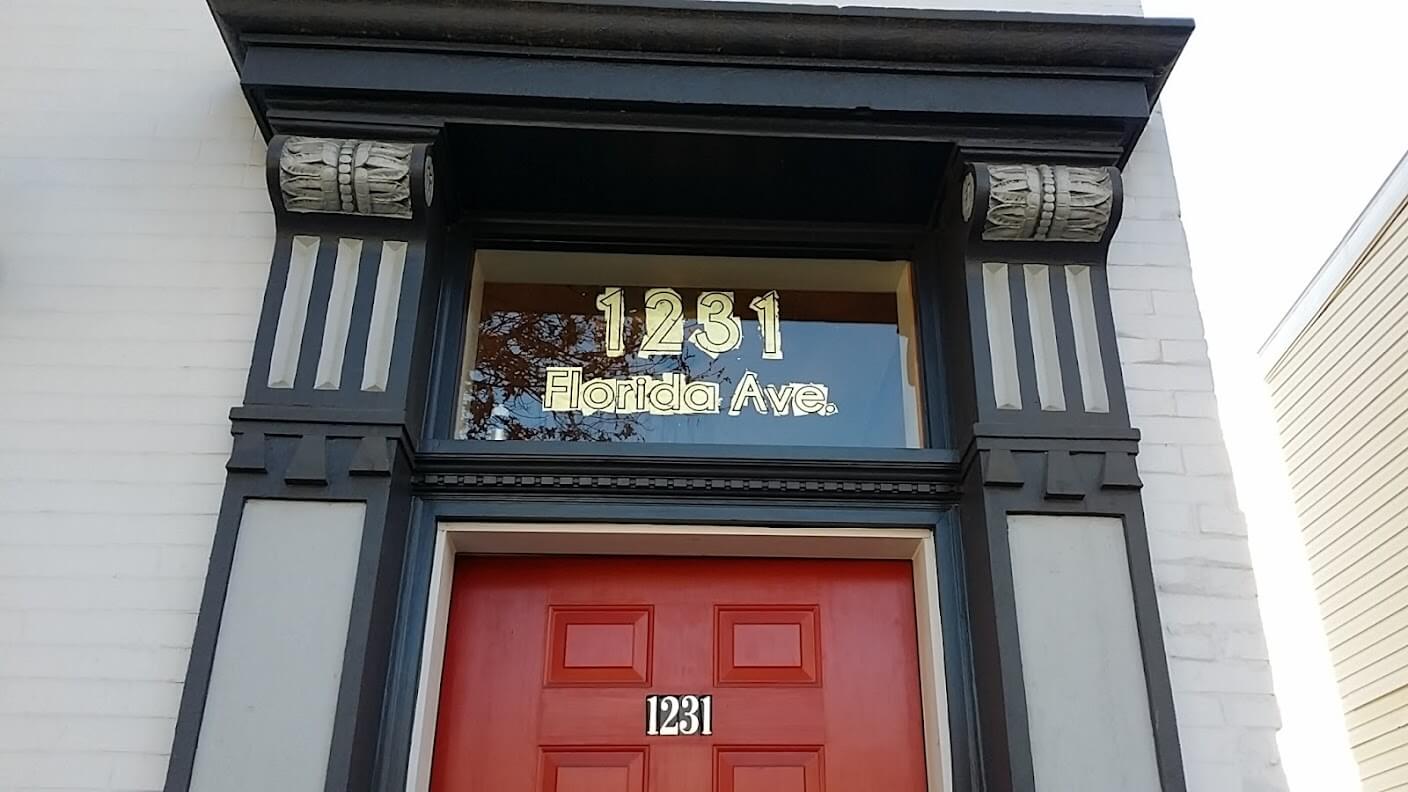
Shown above is the gold leaf home address after it has been gilded. However, we still need to eradicate the excess gold leaf around the letters and numbers.
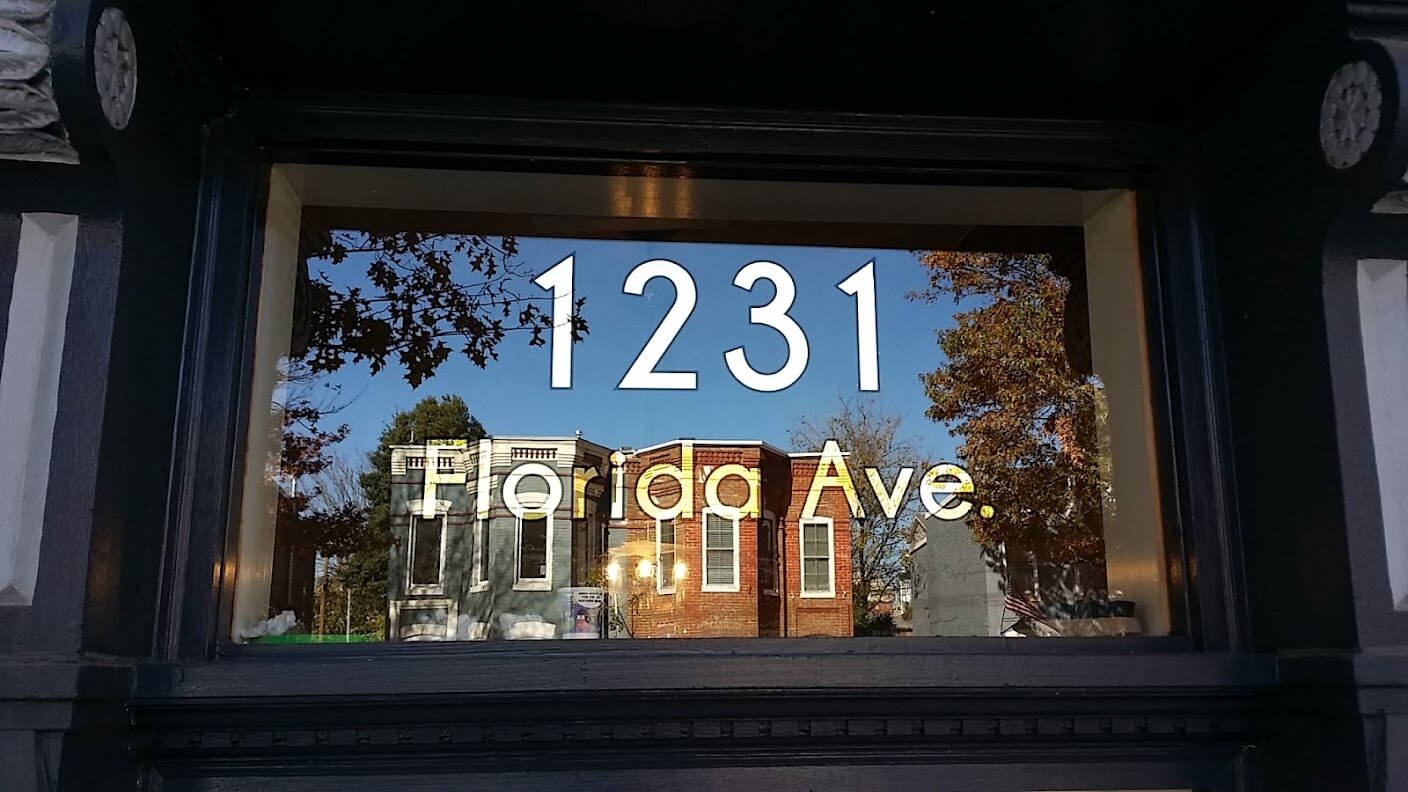
This photo is a close-up photo of the finished gold leaf home address. Once the gold has completely dried, it becomes nearly as shiny and reflective as the glass itself.
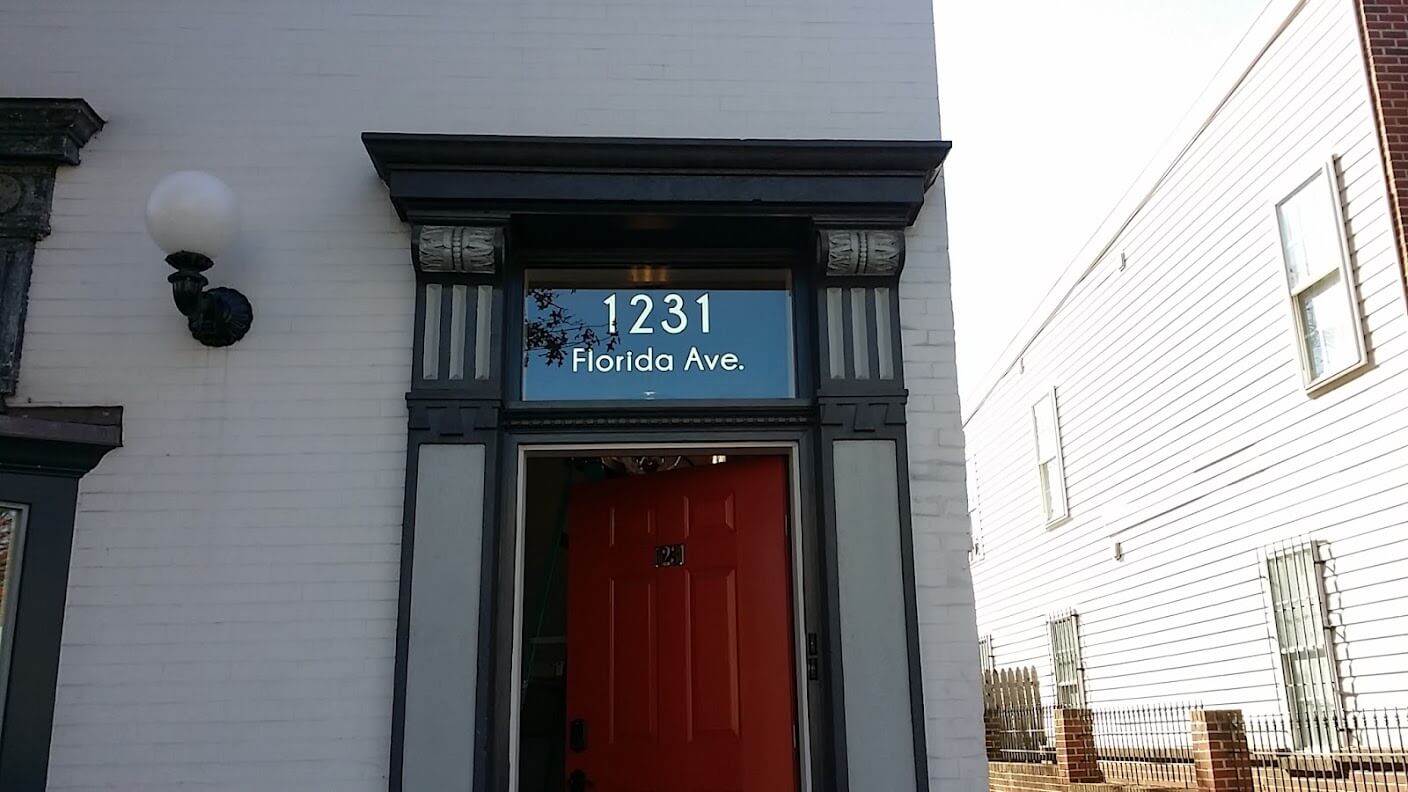
Please enjoy another photo of the finished product. The new gold leaf home address compliments the red entry door and black trim beautifully.
Ancient Egyptians and Romans
Gilding has occurred throughout history and all across the world. While gilding most often refers to gold leaf, the term also applies to other metals turned into leaf. Such metals include copper, aluminum, palladium, and silver. Dutch metal, for example, is a form of brass made to look like a gold leaf but is much less expensive.AIn addition, ancient Egyptians used gold leaf to adorn objects such as coffins, caskets, and tombs as early as 2300 years before the birth of Christ. Interestingly, numerous Egyptian paintings depict goldsmiths making the gold leaf.
The Egyptians beat the gold to a surprisingly thin width considering the lack of any industrial machines. Artisans would hit the gold to a thickness equivalent to a modern sheet of tin foil, which is undoubtedly impressive in its own right. However, the gold leaf produced today is approximately 100 times thinner than the Egyptians.
Ceremonial Gilding
Ancient Romans used gold leaf in an architectural sense, gilding the ceilings of their palaces and temples. This trend extended in the middle ages to churches and palaces throughout Europe. Some methods included decorating the domes and vaults of majestic buildings. Additionally, some picked out architectural elements within the structure to convey the power and wealth of the owners.
Gilding in modern times
Today, gilding is still prevalent. Most well-known is the traditional aspect, namely picture frames and furniture. However, one should not view gilding as limited to these areas. Many other areas have further developed. These include art, interior decoration, book-binding, and the transformation of an assortment of items. On interior ornamental features, gilding can highlight and pick out details. Described as “flossing,” gilding looks great on columns and capitals, bead and reel moldings, and more. The purpose is to accentuate the ornamentation and draw the viewer’s attention to the grandeur of the space.
Due to the edible nature of pure gold leaf, even food is fair game, with gold leaf in elevated dishes or floating in an alcoholic beverage. If there is the determination by humans to gild an object, we will likely determine a method to do so. The brilliance of this work requires the hand of skilled and experienced artisans to achieve the desired effect. It is imperative to consider this fact when selecting any contractor for a gilding project.
Leaf options for your gold leaf home address
First and foremost, the most popular is gold leaf. Gold is the most popular and arguably beautiful metal that exists. In leaf, form is available in a range of carats. Options range anywhere from 6-carat white gold to 24-carat extra thick gold leaf.
Different metals are added to gold, providing strength and creating a more comprehensive range of colors. White gold, for example, is a gold alloy that includes at least one other white metal. These are usually nickel, manganese, or palladium.
Copper metal leaf is cheap and easy to produce. Because of the wide availability of this inexpensive metal, they are made in much larger squares and are much thicker than gold leaf. These qualities enable them to be picked up and applied by hand.
Palladium is popular and a good choice for those who desire a silvery color. It is more precious than gold!
You can find more examples of gold leaf home address projects by Designs & Signs below:

